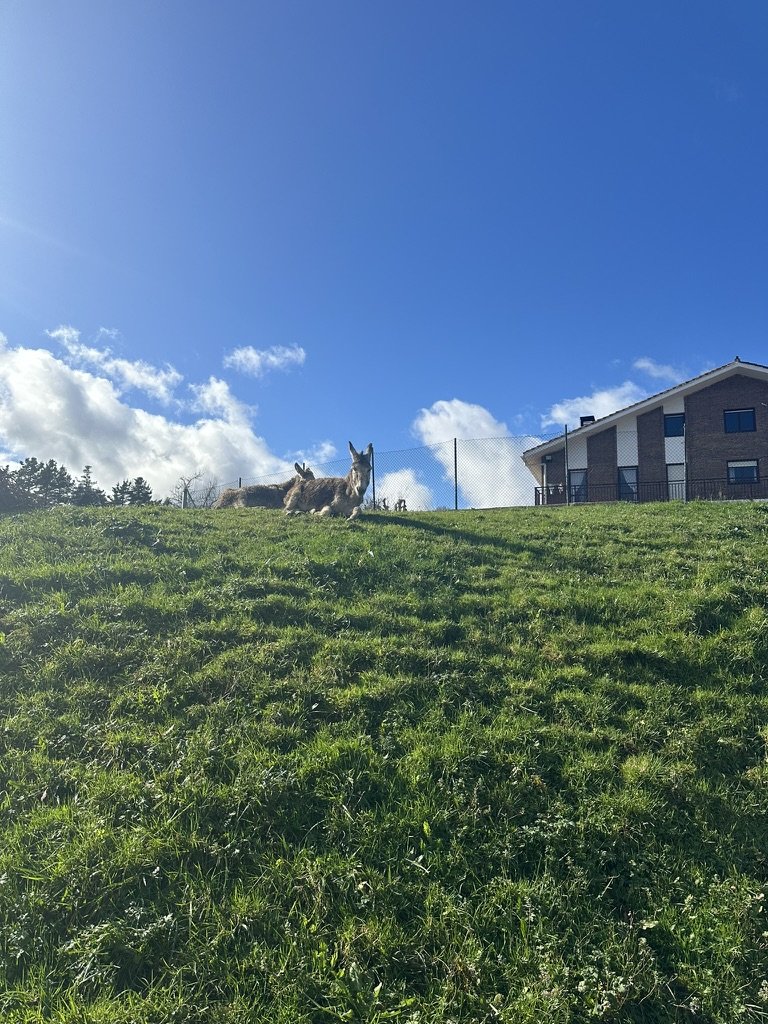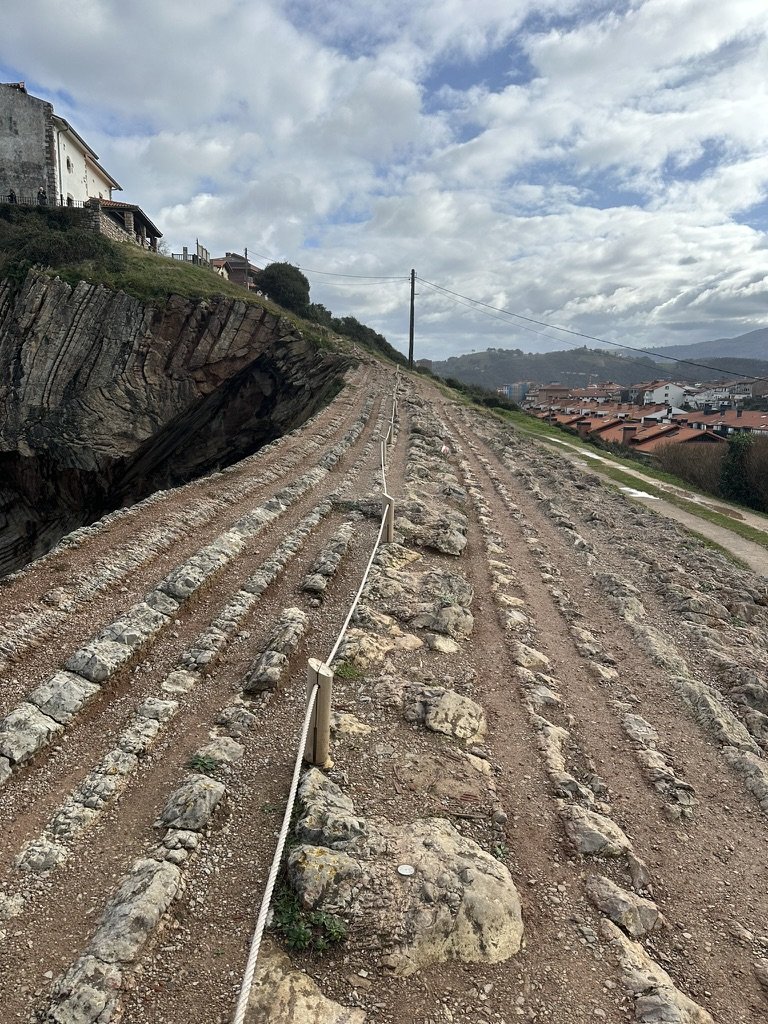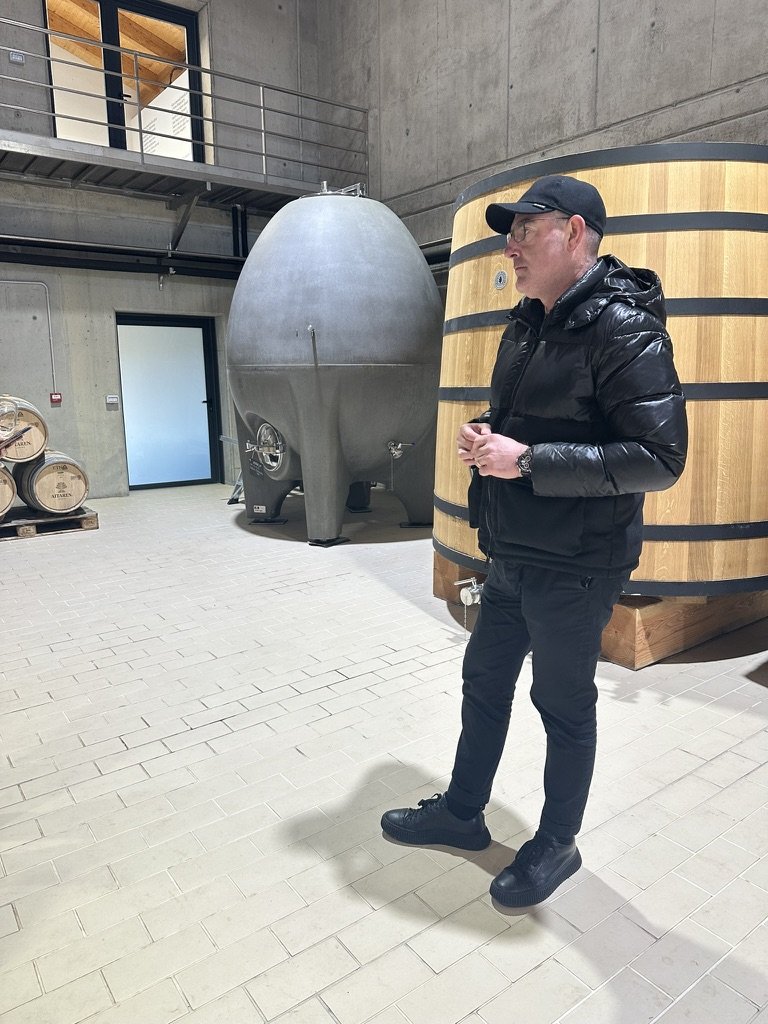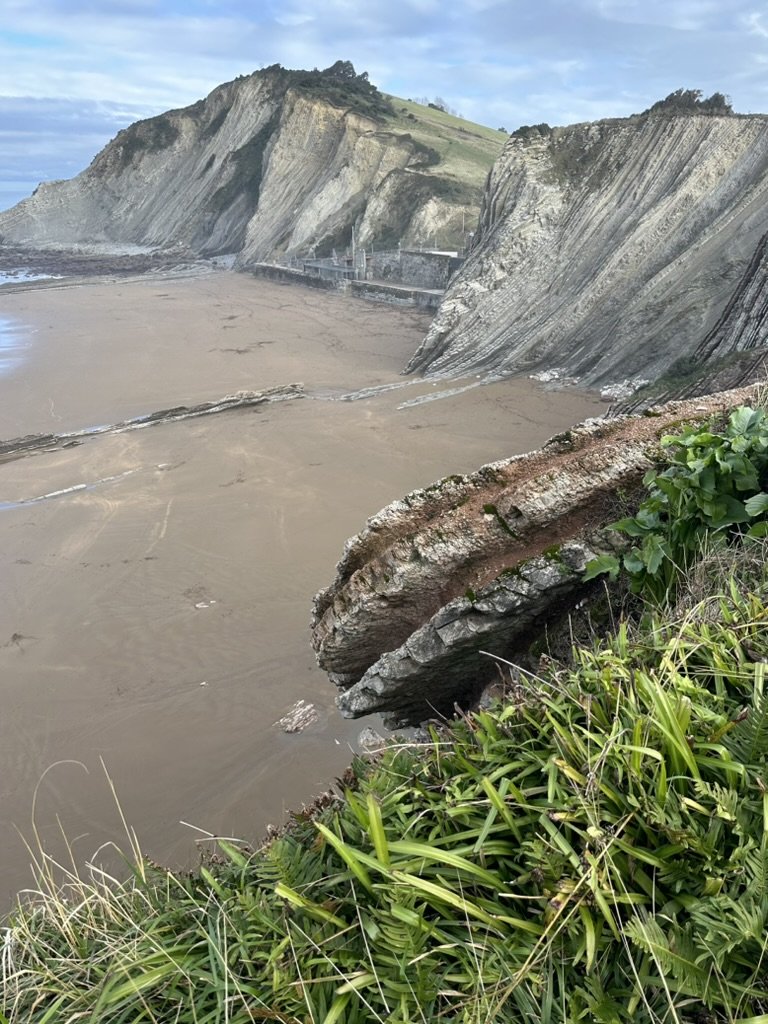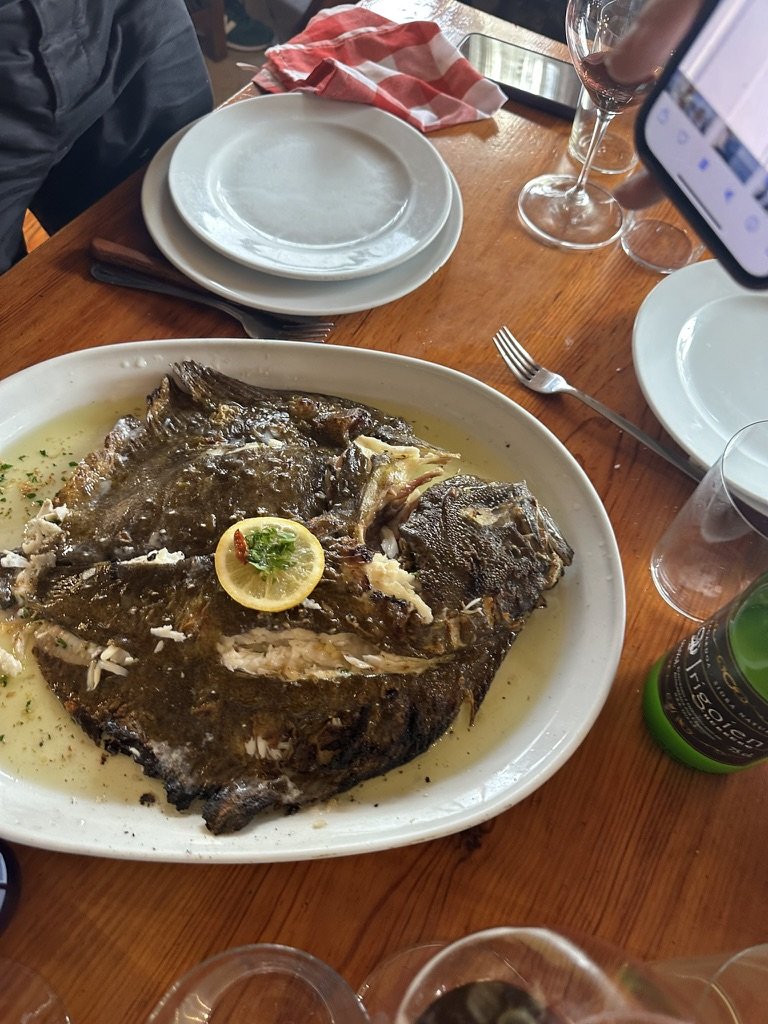Aitaren
The Flysch. The Flysch is dramatic. Mysterious. Definitely fun to say. It occurs in mountain ranges as part of the Alpine belt, and we meet it in the forelands of the Pyranees – Zumaia, Spain. A coastal heart of the Basque Country.
To say The Flysch is visually striking is an understatement. Striations of rock build out from the Cantabrian Sea in ribboned lines, following the rise of the sand before sensationally making a hard upward turn to create steep cliffs, on top of which cling scrubs of turf and some very brave homes.
This is the bedrock upon which Aitaren lives. Jon Eizagirre’s father originally planted the vineyards 20 years ago as a hobby – the family distributes boutique foods in the region, and have always kept a patrimonial polycultural farm. Donkeys eye us watchfully while geese nibble on the verdant hills. We are about a kilometer from the beach where the flysch cascades so dramatically, and that bedrock is undoubtedly here, underneath no more than 30 cm of clay. In their best parcel, situated just down the slope from the family home, behind the winery and facing north, the flysch is visible on the surface. Can you imagine the struggle those Hondarrabi Zuri vines must have?
It definitely shows in the wines. The family has never used herbicides or pesticides, relying only on their sheep for ground cover control and fertilizer. And unlike so many vineyards in the area, these vines are trained in double guyot, which gives tiny yields in a region known for… not tiny yields.
We fell in love with these supple, textural wines a few years ago. Fermenting and aging in a giant clay egg and used French oak with extended lees aging tends to push our buttons. If you’ve tasted the wines of Aitaren, or drank great wine with us, you know what we mean… And if great wine is followed up by and exquisite lunch in a Basque cider house — we’ll be friends forever.


